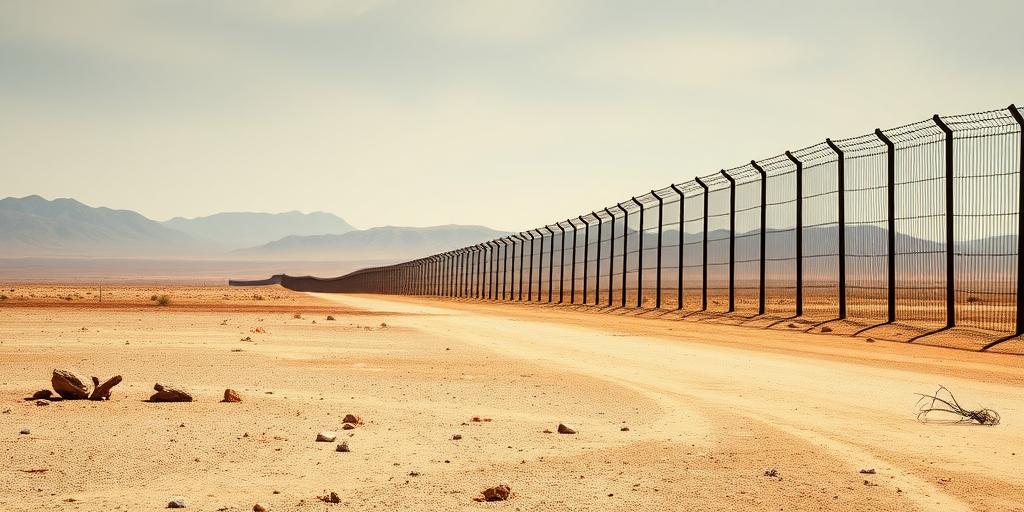The Influence of Resource Scarcity on Border Conflicts
Resource scarcity, a condition where the demand for natural resources exceeds the available supply, has become an increasingly significant factor in driving border conflicts around the world. These conflicts, often characterized by violence and displacement, arise as communities and nations compete for access to vital resources such as water, land, and minerals. This post examines the multifaceted ways in which resource scarcity exacerbates border tensions and explores potential strategies for mitigating these conflicts.
The Nexus of Resource Scarcity and Border Disputes
Border regions are often ecologically fragile and home to diverse populations with competing interests. When resources become scarce, these pre-existing tensions can escalate into full-blown conflicts. Several key mechanisms drive this dynamic:
- Competition for Water Resources: Water scarcity is a major catalyst for border disputes, particularly in arid and semi-arid regions. Transboundary rivers and aquifers, which cross international borders, become points of contention as upstream and downstream communities vie for access to this essential resource. For example, disputes over the Nile River, shared by multiple countries in East Africa, have led to heightened tensions and diplomatic standoffs.
- Land Degradation and Desertification: Land degradation, driven by unsustainable agricultural practices and climate change, reduces the availability of arable land, forcing communities to migrate and encroach upon neighboring territories. This phenomenon is particularly evident in the Sahel region of Africa, where desertification has fueled conflicts between pastoralist and agricultural communities along border areas.
- Mineral Resources and Illegal Mining: The discovery of valuable mineral resources in border regions can attract both state and non-state actors, leading to disputes over extraction rights and revenue sharing. Illegal mining activities, often conducted by transnational criminal networks, further destabilize these areas, undermining governance and exacerbating local conflicts.
Case Studies: Border Conflicts Driven by Resource Scarcity
Several real-world examples illustrate the profound impact of resource scarcity on border conflicts:
- The India-Bangladesh Border: Disputes over water sharing from the Teesta River have long strained relations between India and Bangladesh. The river is a crucial source of irrigation for farmers on both sides of the border, and disagreements over water allocation have led to protests and clashes.
- The Sudan-South Sudan Border: The border region between Sudan and South Sudan is rich in oil reserves, but the two countries have struggled to agree on a demarcation line and a formula for sharing oil revenues. This has resulted in periodic outbreaks of violence and continued political instability.
- The Democratic Republic of Congo (DRC): The DRC's eastern border region is rife with conflicts over mineral resources such as coltan, gold, and diamonds. Armed groups compete for control of mines, exploiting local populations and fueling a complex web of violence and displacement.
Strategies for Mitigating Resource-Related Border Conflicts
Addressing the root causes of resource scarcity and strengthening cross-border cooperation are essential for preventing and resolving these conflicts. Some effective strategies include:
- Integrated Water Resources Management: Promoting equitable and sustainable water management practices, such as water-use efficiency, rainwater harvesting, and transboundary water agreements, can help reduce tensions and ensure access to water for all stakeholders.
- Sustainable Land Management: Implementing sustainable land management practices, such as agroforestry, conservation agriculture, and land rehabilitation, can restore degraded lands and improve agricultural productivity, reducing the pressure on border areas.
- Community-Based Natural Resource Management: Empowering local communities to manage natural resources in a participatory and inclusive manner can enhance their livelihoods and reduce the likelihood of conflict. This approach requires strengthening local governance structures and promoting dialogue between different ethnic and social groups.
- Strengthening Cross-Border Cooperation: Establishing joint border commissions, promoting cross-border trade and investment, and fostering cultural exchanges can build trust and cooperation between neighboring countries, reducing the potential for conflict.
Conclusion
Resource scarcity is a significant driver of border conflicts around the world, particularly in regions characterized by ecological fragility and political instability. Addressing this challenge requires a multifaceted approach that combines sustainable resource management, community empowerment, and cross-border cooperation. By investing in these strategies, we can help build more resilient and peaceful border communities, ensuring that access to essential resources does not become a source of conflict.
By understanding the interplay between resource scarcity and border disputes, policymakers, researchers, and practitioners can develop more effective strategies for promoting peace and sustainable development in border regions worldwide. The need for proactive and collaborative solutions has never been more urgent.









